Evaluating Prototypes: A B2B Checklist for Fit, Finish, and Functionality
To properly evaluate an eyewear prototype, you must conduct a three-part physical inspection. First, verify all critical dimensions like lens socket and bridge width against your tech pack using calipers. Next, scrutinize the material finish under magnification for flaws like sink marks or polishing inconsistencies. Finally, perform functional tests, such as cycling the hinges 50 times to check for looseness or binding, to validate mechanical integrity and long-term durability.
The Strategic & Financial Case for Prototype Evaluation
The prototype is the physical manifestation of your brand’s quality promise and the contractual benchmark against which all mass production is judged. Professional evaluation transforms this sample into a powerful risk mitigation tool. It provides measurable data on dimensional accuracy and material performance that directly correlates to production success.
Critical Warning: Defects discovered after production tooling is complete can inflate project costs by 300-500%. This is due to the expense of tooling modifications and the market opportunity cost from launch delays.
The “Golden Sample”: Your Contractual Benchmark
The approved prototype becomes your “Golden Sample”—the legally binding standard for mass production. This physical asset is the foundation of your manufacturing agreement because it provides objective, measurable criteria for accepting or rejecting production batches. This eliminates subjective debates over quality.
Best Practice: Maintain three identical Golden Samples. One for your internal QC team, one for the manufacturer’s production floor, and a third secured with your legal documentation.
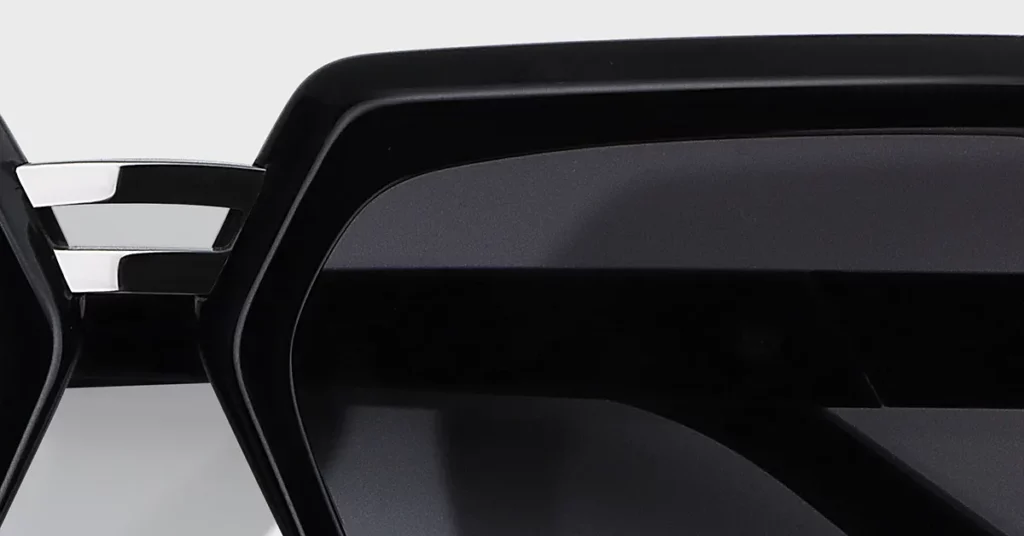
The Financial ROI of Rigorous Prototyping
Professional prototype evaluation delivers a clear return on investment by preventing downstream costs. While a prototype may cost $2,000-$8,000, this investment prevents warranty claims that average $12-$25 per unit. For a 10,000-unit run, this means preventing over $250,000 in direct losses and brand damage.
Key Metric: A manufacturing defect costs approximately $50-$200 to fix at the prototype stage. That same defect discovered in production can cost $5,000-$15,000 to resolve, representing a 25-75x cost increase.
Leveraging Prototypes for Market Testing & Pre-Orders
High-fidelity prototypes are not just for internal validation; they are powerful sales tools. Use them for early market validation and to generate pre-orders that can fund your production run. This is because authentic user testing and professional marketing photography build buyer commitment before you invest in tooling.
Pro Tips: Use content from your prototype photoshoots for social media teasers and influencer partnerships. This builds market anticipation and validates demand, which directly de-risks your investment in inventory.
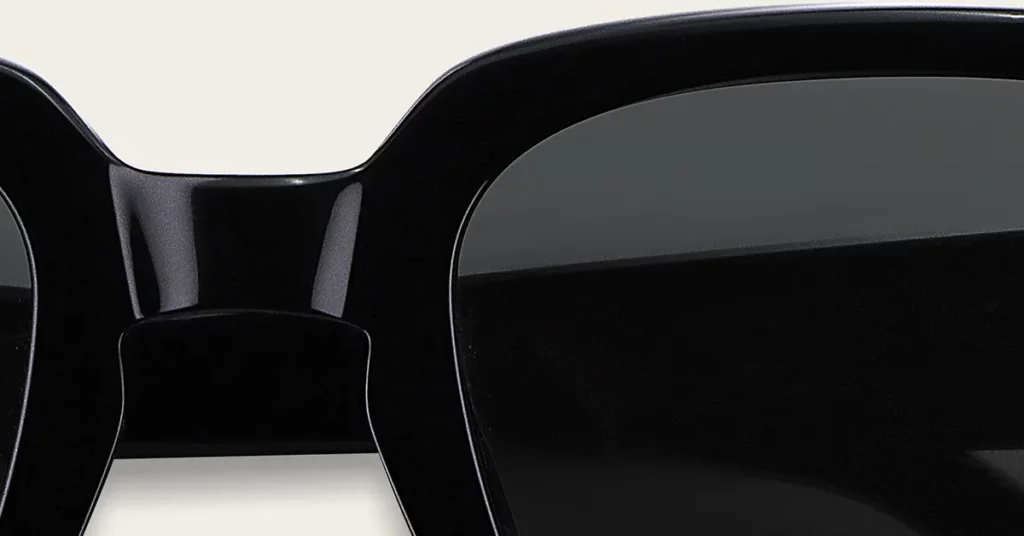
Decoding Prototyping Technologies
Understanding prototyping methodologies is critical for aligning your evaluation goals with the right technology and budget. Your choice of a handmade sample, a 3D-printed model, or a production-intent prototype directly impacts the accuracy of your evaluation data.
| Technology | Best For | Key Advantage | Typical Timeline |
| Handmade | Material & Finish Assessment | Unmatched material authenticity | 3-6 weeks |
| Rapid Prototyping (3D) | Speed & Design Iteration | Fast evaluation of form & ergonomics | 24-72 hours |
| EVT Prototype | Final Pre-Production Validation | Production-intent materials & methods | 4-8 weeks |
Key 3D Printing Technologies for Eyewear
Advanced 3D printing delivers prototypes that closely approximate production quality. Each technology offers distinct advantages, so you must select the one that matches your specific evaluation objective.
| 3D Printing Method | Primary Use Case | Resolution & Accuracy | Key Benefit |
| Stereolithography (SLA) | “Looks-Like” aesthetic models | 0.025mm-0.1mm layer height | Exceptional smooth surface finish |
| PolyJet Technology | Multi-material & full-color models | Over 500,000 color combinations | Simulates final CMF (Color, Material, Finish) |
| Selective Laser Sintering (SLS) | “Works-Like” functional models | Tensile strength >40 MPa | Durable enough for mechanical testing |
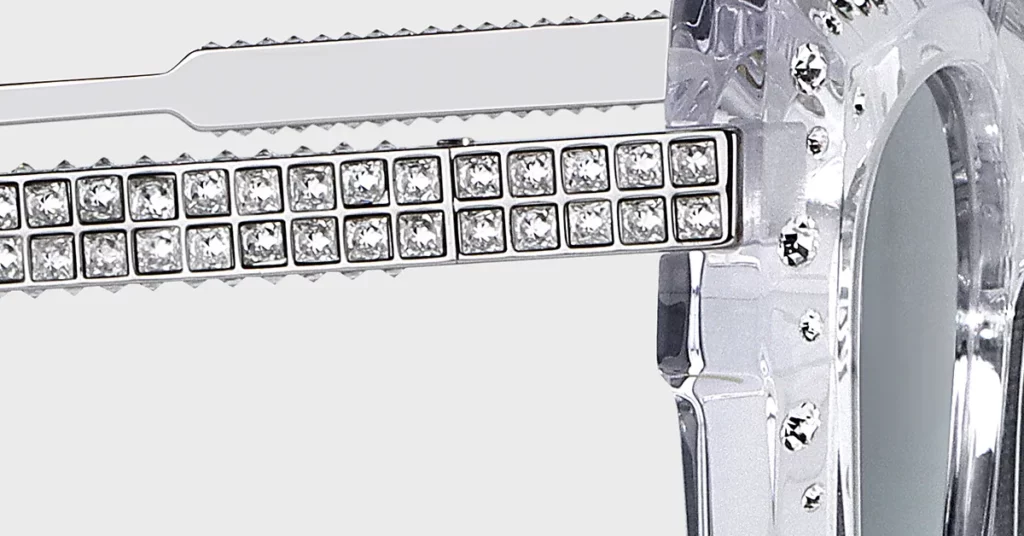
The Master Evaluation Checklist: Fit & Human Factors
Quantitative analysis of fit provides the objective data needed to enforce quality standards. You must use precision measurement tools to verify that the physical prototype complies with the geometric tolerances defined in your technical specification pack.
Critical Dimension Verification
Your frame’s critical dimensions directly impact fit, comfort, and optical performance. You must verify these against your tech pack’s tolerances using digital calipers. Any deviation here signals a potential for systemic production errors.
- Lens Socket: Must be within ±0.1mm to ensure proper lens retention.
- Bridge Width: Deviations over ±0.3mm create pressure points.
- Temple Length: Must hold a ±0.5mm tolerance for behind-ear security.
- Pantoscopic Tilt: Must be within ±2 degrees of the specified angle (typically 8-12°) to prevent optical distortion.
Qualitative Fit Trials
Human-factor evaluation assesses comfort and usability under real-world conditions. Always conduct dynamic fit trials with a diverse user group that represents your target market to identify issues not detectable by static measurement.
- Pressure Point Evaluation: Use pressure-sensitive film to ensure weight is distributed evenly on the nose bridge and behind the ears.
- Dynamic Fit Security: Test for stability during head shaking and other movements. The frame must not slide or lift.
- Temple Comfort: The design must balance a secure grip with comfortable pressure levels that do not cause headaches after 4+ hours of wear.
- Skin Interaction: Demand compliance reports for standards like EN 16128 for nickel release to prevent skin irritation and ensure biocompatibility.
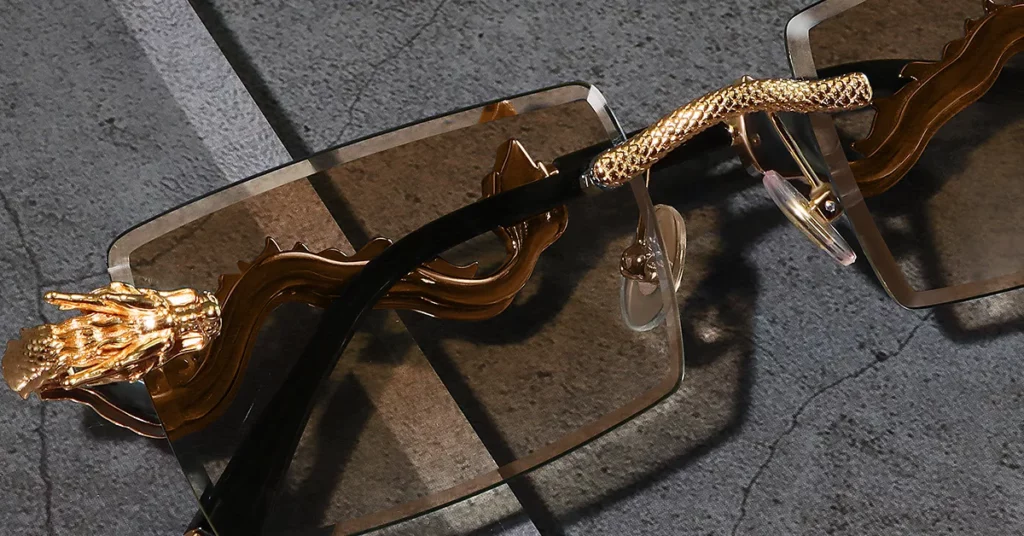
The Master Evaluation Checklist: Finish & Materials
Surface quality and material integrity are direct indicators of a manufacturer’s craftsmanship and process control. This assessment requires systematic inspection using controlled lighting and magnification to identify defects that impact both aesthetic appeal and long-term durability.
Frame Body and Surface Integrity
You must perform a micro-inspection of all acetate or polymer components. The presence of voids, bubbles, or sink marks is a red flag for poor process control that will escalate during mass production.
Critical Warning: Internal voids larger than 0.5mm in diameter or surface sink marks deeper than 0.1mm indicate serious manufacturing process flaws. Do not proceed without a root cause analysis from the supplier.
Finish & Coating Verification
The quality of the polish and any applied coatings directly reflects your brand’s position in the market. Differentiate between hand-polishing, which delivers superior gloss, and tumble-polishing, which can leave micro-scratches.
- Color Verification: Use a spectrophotometer to check color consistency against your Pantone codes. The color difference, or ΔE, must be less than 2.0 for premium applications.
- Coating Durability: Demand abrasion test reports. A premium PVD coating should withstand a minimum of 1,000 cycles on a Taber abrader (ASTM D4060) without visible wear.
Hardware and Component Integration
Hardware evaluation is a forensic analysis of all mechanical components and their assembly quality. This process determines the functional performance and reliability of the final product.
- Hinge Mechanics: Test for smooth actuation without any lateral “play,” which must not exceed 0.2mm. The opening and closing force should be consistent.
- Component Seating: Inspect all joints, inlays, and rivets. Gaps must not exceed ±0.1mm, and all surfaces must be perfectly flush.
- Fastener Integrity: Verify that all screws are the correct material grade (316L stainless steel is standard) and have been torqued to specification (typically 0.3-0.8 N⋅m).
- Lens Groove Analysis: The lens groove must have a uniform depth (±0.05mm tolerance) and a smooth finish to prevent stress that causes optical distortion.
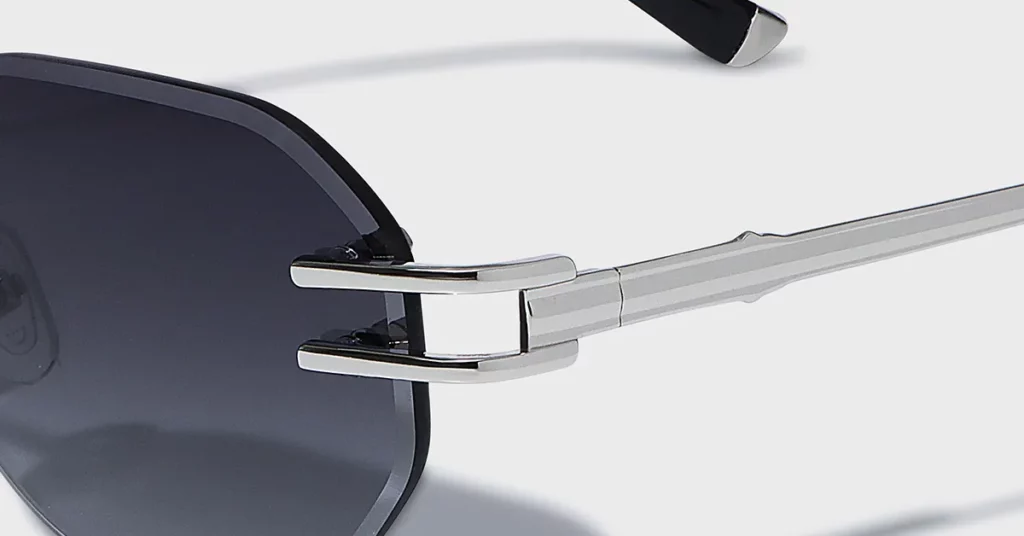
The Master Evaluation Checklist: Function & Durability
Durability stress testing provides objective data on how your product will perform over its lifetime. This is not optional; it is how you validate your warranty policy and protect your brand from widespread field failures.
Mechanical and Environmental Stress Testing
You must subject prototypes to a battery of tests that simulate years of use and exposure to various environmental conditions.
- Hinge Fatigue: The hinge must withstand a minimum of 25,000 cycles (simulating 5 years of use) without any mechanical failure or degradation in performance.
- Frame Torsion: The frame must withstand adjustment forces up to 15 N⋅m without permanent deformation or material stress whitening.
- Environmental Testing: Prototypes are placed in chambers to simulate extreme conditions (-20°C to +70°C and up to 95% humidity) to check for material warping or discoloration.
- Chemical Resistance: The frame must be tested against simulated sweat (ISO 3160-2), cosmetics, and cleaning agents to ensure coatings and materials do not degrade.
Optical Performance Validation
For all eyewear, especially those with prescription or protective lenses, you must verify optical performance and standards compliance.
- Lens Clarity: Use wavefront analysis or MTF testing to detect optical distortion that is not visible to the naked eye.
- Coatings Performance: Validate that hydrophobic treatments produce a water contact angle greater than 110° and that anti-scratch coatings pass the steel wool abrasion test (ASTM F735).
- Standards Compliance: Demand certificates of compliance for global standards, including UV protection (ISO 12312-1) and impact resistance (ANSI Z87.1 Drop Ball Test).
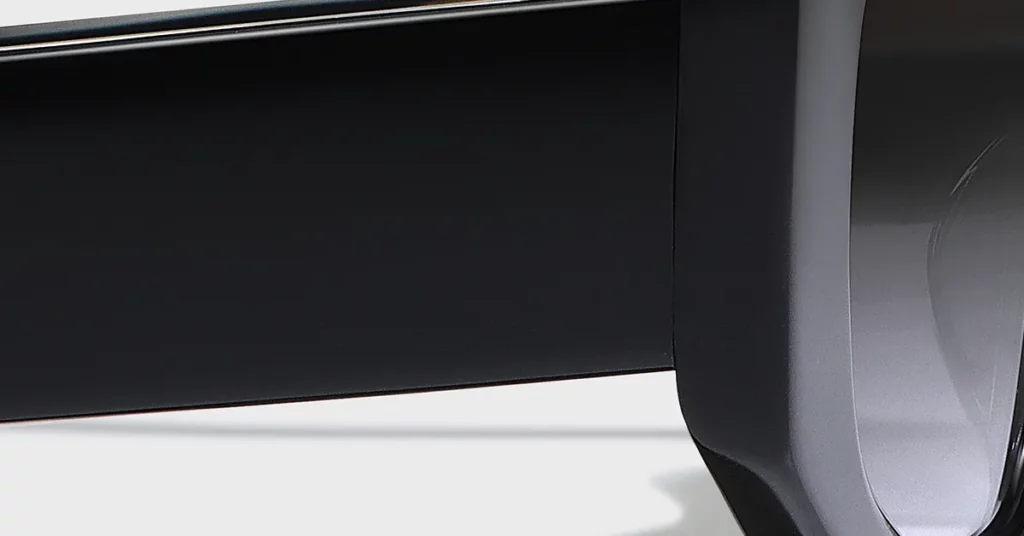
From Evaluation Data to Supplier Vetting
The flaws and successes of a prototype are not just product feedback; they are direct intelligence on a manufacturer’s capabilities. You must interpret every deviation from your tech pack as a reflection of their quality control systems and production readiness.
Differentiating Error Types
It is essential to distinguish between a one-off error and a systemic failure. A single bubble in acetate might be a random flaw, but if three prototypes all show dimensional errors consistently biased in one direction, it signals a systemic tooling or process control problem.
The Bottom Line: A manufacturer demonstrating more than two systemic defect patterns in a prototype evaluation poses a significant risk for production. Their quality systems are likely inadequate for consistent, high-volume manufacturing.
Evaluating the Feedback Loop
A supplier’s response to your evaluation report is a test of their partnership potential. A strong partner will analyze the root cause of a defect and propose a documented corrective action plan. A weak partner will offer excuses or quick fixes.
Key Metric: The speed and quality of prototype revisions is a critical KPI. Expect a 50%+ reduction in identified defects within 2-4 weeks. If the revision returns with different but equally problematic issues, it signals a lack of process control.
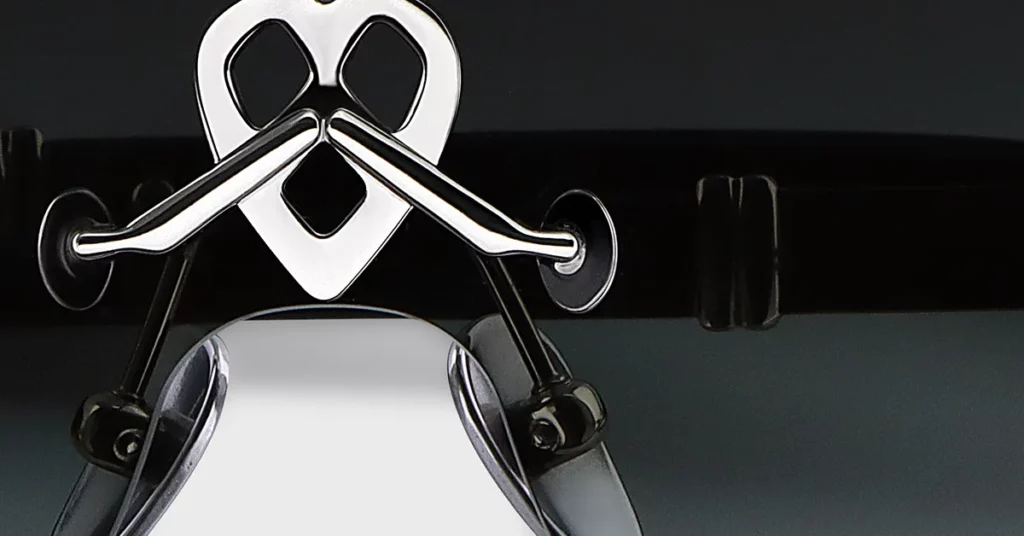
Conclusion
Granular prototype evaluation is your most effective risk mitigation strategy. It transforms a sample into data, allowing you to validate a supplier’s capabilities, predict production quality, and establish legally binding standards. This systematic process is the foundation for a successful product launch and a profitable, long-term manufacturing partnership.
At Kssmi, we use this data-driven approach to ensure your investment translates directly into market-ready quality. Schedule a consultation to discover how our evaluation process can de-risk your next project.
Frequently Asked Questions
1. How well does a 3D-printed prototype predict the feel of acetate?
It provides limited value. Materials like VeroFlex are useful for initial ergonomic checks but differ from acetate in thermal properties and surface hardness, making them poor predictors of the final premium feel.
2. What’s the main difference between “looks-like” and “works-like” prototypes?
A “looks-like” prototype validates aesthetic elements like color and shape. A “works-like” prototype validates function, such as hinge durability or the thermal output of smart eyewear electronics.
3. How can I test an acetate frame’s long-term color durability?
Use accelerated UV exposure testing (ASTM G155) to simulate 6-12 months of sunlight. A passing result requires a color change (Delta E) of less than 3.0.
4. How do I check a frame’s optical integrity with placeholder lenses?
Evaluate the lens groove geometry for consistency (±0.05mm tolerance). Use polarized light to examine mounted demo lenses for stress patterns that indicate potential optical distortion.
5. What dimensional deviation is acceptable in a first prototype?
Acceptable variance is typically ±0.2mm for critical dimensions. A high degree of variance (>±0.3mm) indicates poor tooling precision or inadequate quality control processes from the manufacturer.